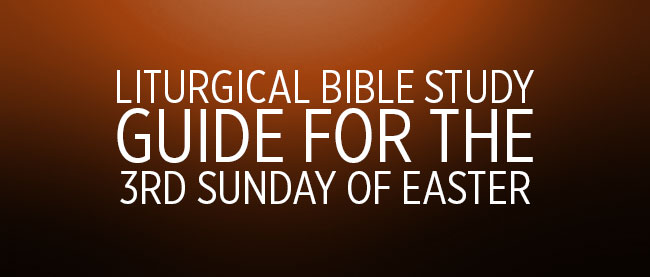1st Reading – Acts 5:27-32, 40b-41
Last week we heard how the Apostles began to minister to the people in the same
way that Jesus had done. This week we hear of the persecution the apostles endured
because of their ministry. The Episcopalians and Lutherans last week heard of both the
ministry and the persecution and this week hear of the conversion of Saul (Paul) on the
road to Damascus and of his subsequent baptism – the only account of the baptism of any of the apostles in Holy Scripture.
This is the second persecution of the apostles, the first having occurred in Chapter 4,
verses 1-22 where Peter and John were brought before the Sanhedrin. This second
Sanhedrin arraignment parallels the first in typical Lucan style – Luke does things in twos – and many scholars have regarded this passage as a doublet of the first. However the Mishnah, the first section of the Talmud, comprising a collection of early oral
interpretations of the Scriptures as compiled about A.D. 200, provides for legal admonition after the first violation, with punishment meted out only in case of recidivism (sort of a two-strikes-and-you’re-out). I am inclined to believe that both persecutions took place, just as reported in Holy Scripture.
2nd Reading – Revelation 5:11-14
Last week we heard Saint John describe the part of his vision of the heavenly liturgy
where he saw the Holy Place and standing in there was a priest-king, the high priest, who identified himself as the Alpha and Omega, who was dead and lives forever and has authority over death and Hades (Acts 1:17-18), The Christ.
Then, as we read through the book of Revelation, come the letters to the seven
churches; churches which were not necessarily major centers, but which were located in
sequence on a major road, with Ephesus as the point of departure. This makes this book in the form of a circular letter which could have been carried easily from one place to the next. The number seven is significant in that in Hebrew numerology it is the number of the covenant and as such, the letter is not addressed just to seven churches, but to all congregations who form part of the new covenant. After the letters, Chapter 4 has us looking with John’s eyes through an open door and seeing a throne. The Holy Place was separated from the Holy of Holies by a curtain and in the Holy of Holies was the Ark of the Covenant (Hebrews 8:3-4). When Jesus died on the cross, the curtain was torn from top to bottom (Matthew 27:51; Mark 15:38) leaving an open door. The Ark of the Covenant was more than a box, it was a cherubim throne. Cherubim thrones were not uncommon in that area of the world during the time of King David. What makes the Hebrew cherubim throne unique is that it is not occupied; the throne in other countries was occupied by the queen mother. What Saint John sees as he looks through the open door is the throne which was located in the Holy of Holies, the place which could be entered only by the High Priest and only once a year (the day of atonement) and then only for the purpose of offering sacrifice to God. Saint John tells us in chapter 5, verse 6, that he sees a lamb, looking as if it had been slain, standing in the center of the throne. Hebrews chapter 5 tells us that the duty of the high priest is to offer sacrifice for sins. This sacrifice was placed on the Ark of the Covenant by the high priest. The lamb which John sees is standing, so it is not dead, but it looks as though it had been slain – it is the resurrected Jesus, the Lamb of God, continually offering His sacrifice for us in heaven (recall that time only has domain on earth, once we die we enter the timeless dimension of eternity – the eternal now).
Gospel – John 21:1-19
In last week’s gospel reading we heard of Jesus’ first two appearances to His
5 apostles. Today we hear about His third appearance. This story is thought by most
commentators to be an appendix added to the gospel conclusion (chapter 20) we heard last week.
Click here to download the Liturgical Bible Study Guide for the 3rd Sunday of Easter.


